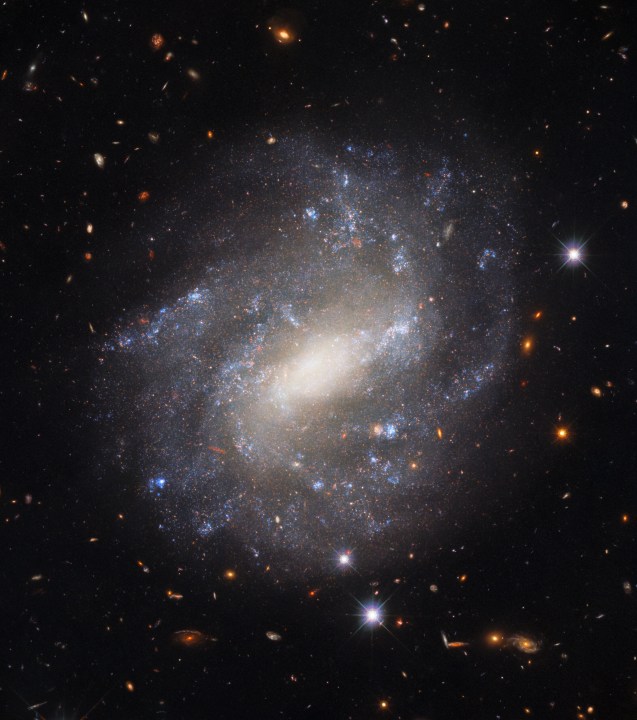Trying to measure the size of the universe is no easy task. We know that the universe is expanding, though the exact rate of this expansion is not yet fixed. So one method that astronomers use to tell how far away very distant objects are is called the cosmic distance ladder. The idea is that different objects can be used as rungs on a ladder for measuring different distances, from looking at the movements of stars to observing pulsating stars called cepheid variables to observing a type of supernova called a Type Ia.
Each of these classes of objects is useful for determining increasingly large distances, but they need to be calibrated to each other to be accurate. Cepheid variables change in brightness over time, and importantly, the speed of the changes in brightness is correlated to their true brightness (as opposed to how bright they appear in the sky). So when we see a star pulsing we can work out its true brightness, and by comparing this to its apparent brightness, we can work out how far away it is.

For even more distant objects, we can use Type Ia supernovae as yardsticks, because these explosions always have approximately the same level of brightness — so once again, we can compare the apparent brightness to the true brightness to work out how far away they are. But, to measure distance accurately, we need a way to check that distances calculated based on cepheids are calibrated to distances based on supernovae.
That’s where galaxies like UGC 9391 come in, which both contains cepheid variable stars and recently hosted a Type Ia supernova. This week’s image from the Hubble Space Telescope shows this handy distance-measuring tool in all its glory.
“UGC 9391 helped astronomers improve their distance estimates by providing a natural laboratory in which to compare two measuring techniques – supernova explosions and Cepheid variables,” Hubble scientists explained. “Improving the precision of distance measurements helps astronomers quantify how quickly the universe is expanding – one of Hubble’s key science goals.”



